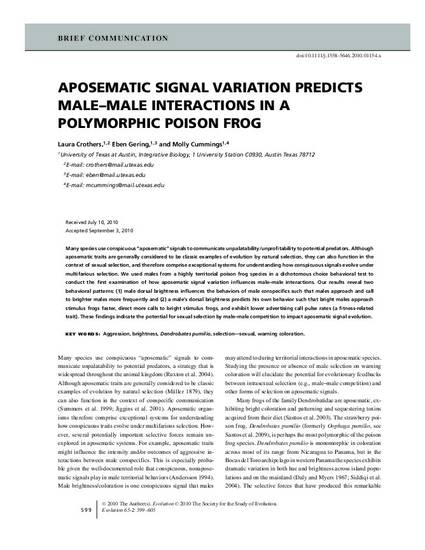
- Aggression,
- Brightness,
- Dendrobates pumilio,
- Selection - sexual,
- Warning coloration
- Biology and
- Life Sciences
Many species use conspicuous “aposematic” signals to communicate unpalatability/unprofitability to potential predators. Although aposematic traits are generally considered to be classic examples of evolution by natural selection, they can also function in the context of sexual selection, and therefore comprise exceptional systems for understanding how conspicuous signals evolve under multifarious selection. We used males from a highly territorial poison frog species in a dichotomous choice behavioral test to conduct the first examination of how aposematic signal variation influences male–male interactions. Our results reveal two behavioral patterns: (1) male dorsal brightness influences the behaviors of male conspecifics such that males approach and call to brighter males more frequently and (2) a male's dorsal brightness predicts his own behavior such that bright males approach stimulus frogs faster, direct more calls to bright stimulus frogs, and exhibit lower advertising call pulse rates (a fitness‐related trait). These findings indicate the potential for sexual selection by male–male competition to impact aposematic signal evolution.
Available at: http://works.bepress.com/eben-gering/2/

©2010 The Author(s). Evolution ©2010 The Society for the Study of Evolution